 August 6, 2015 John E. Ross, KD8IDJ, Editor
| |||||||
Amateur Radio Parity Act Would Not Void "Private Contracts," ARRL General Counsel Says ARRL General Counsel Chris Imlay, W3KD, has rebutted assertions, expressed by some, that the Amateur Radio Parity Act of 2015 would represent an unlawful intrusion into "private contracts" and would invalidate architectural limitations and rules regarding the installation of ham radio antennas in residential neighborhoods. Imlay said the argument raised is that no federal legislation should alter private land-use restrictions, since these are contractual obligations. "The contractual characteristic of private land-use regulation has not existed in the United States for a great many years," he pointed out. Imlay recently expanded on the topic during a lengthy interview with HamRadioNow webcast host Gary Pearce, KN4AQ.
Rather than contracts, Imlay explained, private land-use restrictions are limitations placed on the use of land long before the buyer ever shows up, and they have become increasingly difficult to avoid. With more and more neighborhoods imposing CC&Rs, the only choice a radio amateur has, Imlay told Pearce, is to buy or not to buy a dwelling in a community that may prohibit antennas completely. The legislation -- H.R. 1301 and S. 1685 -- calls on the FCC to apply the three-point test of the federal PRB-1 preemption policy to private land-use restrictions. Imlay said its passage would not mean that hams living in neighborhoods governed by CC&Rs could erect any antenna they wished. The obligation a homeowners association would have under the bill is not to prohibit but to make reasonable accommodation for some sort of effective outdoor Amateur Radio antenna, imposing the least practicable restriction to accomplish the association's aesthetic purposes, he explained.
The legal underpinning of the Amateur Radio Parity Act of 2015 is well established, Imlay pointed out, and private land-use regulations must give way when they conflict with federal telecommunications policy. "It was held a long time ago by the US Supreme Court that federal communications policy trumps even private land-use regulations," Imlay told Pearce. "That's not a taking of land under the Constitution. It's simply a supervening authority." Imlay said that private land-use regulations that conflict with expressed federal telecommunications policy are subject to pre-emption, which would restore private property rights to the landowner. The FCC, he explained, is not hostile to the bill, but it has indicated that it would prefer to have some guidance from Congress -- which does have the power to act -- before amending the Amateur Radio Service Part 97 rules. Several years ago, the FCC established the OTARD rule that lets residents living in deed-restricted communities install over-the-air television or radio reception devices, such as a satellite dish, but it does not apply to Amateur Radio antennas. Imlay said this precedent applies to the Amateur Radio Parity Act of 2015, and that the FCC was comfortable with the guidance it got from Congress at the time with respect to OTARD. "There is no difference in the effect on the strong interest in Amateur Radio communications, whether or not an amateur station is precluded by a zoning regulation...or by a deed restriction," Imlay said in the interview. "The effect is the same: The ham can't build a station." "We have until the end of 2016 to get this bill passed, and we have every intention of doing that," he assured Pearce. Full information on The Amateur Radio Parity Act of 2015 is on the ARRL website. Hiram Percy Maxim Award Recipient Anna Veal, W0ANT, Sets Sights on Biomedical Career Licensed since 2008 when she was just 8 years old, the young winner of the 2014 ARRL Hiram Percy Maxim Award, Anna Veal, W0ANT, of Littleton, Colorado, already has an enviable list of accomplishments to her credit. The HPM Award, the League's top youth recognition, is awarded annually to a radio amateur and ARRL member under the age of 21, whose accomplishments and contributions to the Amateur Radio and local communities "should be of the most exemplary nature." The winner receives $1,500 and an engraved plaque. A rising sophomore at STEM School and Academy in Highlands Ranch, she is co-founder of the school's Spartan Amateur Radio Club (AB0BX), which nominated her, and she has served as its president. She envisions a career in the biomedical sciences.
"I would like to attend Colorado State University and study biomedical engineering," she told ARRL. "Since I'm a diabetic and have been on an insulin pump for a couple of years now, I've seen how biomedical engineers help peoples' lives, and I want to be able to be a part of that." Anna will serve as ham radio team captain at the 2015 Juvenile Diabetes Research Foundation (JDRF) Denver "OneWalk" on September 13. Later the same month, she'll participate in her second Tour de Cure cycling event, sponsored by the American Diabetes Association, for which she serves as a youth ambassador. In addition to these community activities and her involvement with her school's Amateur Radio club, she's looking forward to technology competitions with the Technology Student Association (TSA) "and continuing to learn the guitar and piano." Anna's is a ham radio family. Her mother and father, Paul, N0AH, and Peggy, KD0ISN, are both educators and ARRL Teachers Institute on Wireless Technology alumni. Anna, who turns 15 this month, has begun to rack up an admirable contesting and DXpeditioning resume. "When I was younger I really enjoyed participating in the ARRL Rookie Roundup," she said, "and this year, we worked the ARRL Sweepstakes phone competition under the school category, and at home the ARRL 10 Meter Contest as part of a multiop team." She's already attended two Contest University (CTU) sessions and is a regular presence at Dayton Hamvention, where she was presented with the 2011 Radio Club of America Young Achiever's Award. She was named the 2015 Amateur Radio Newsline "Young Ham of the Year," and will travel to Huntsville, Alabama, this month to accept the award. She also was a team member on the 2011 Youth DX Adventure at TI5N.
In naming Anna as the 2014 HPM Award recipient, the ARRL Board of Directors cited her "enormous degree of involvement, service, and leadership throughout the Amateur Radio community" as well as her contest and DXpedition participation and her presentations at ham radio gatherings. The Board said she has "provided leadership and a positive example within her Amateur Radio community and among her peers." Her dad was more succinct. "We are very proud of her!" he told ARRL. California ARES Volunteers Support Wildfire Response Amateur Radio Emergency Service (ARES) volunteers in Butte County, California, responded on July 29 to a Red Cross request to support communication at an evacuation shelter in Oroville during the Swedes Fire. Butte County Emergency Coordinator Scott Petersen, KE6VUS, said several ARES operators were called via a newly developed telephone tree. Volunteers used the W6SCR repeater, initially for a logistics net and later for point-to-point contacts.
According to Cal Fire, the Swedes Fire -- one of many in California in recent days -- burned over 400 acres, destroying two residences and 14 other structures. That fire was contained as of August 3, although fire crews remain in the area. The Swedes Fire was among the smaller blazes that have popped up this summer on the West Coast -- most of them in California, where some 13,000 residents have been ordered to evacuate as firefighters work to contain about 20 wildfires. The largest -- the Rocky Fire north of San Francisco -- already covers more than 100 square miles. -- Thanks to ARRL Sacramento Valley Section news; Cal Fire Fox-1A Satellite Mated to Launcher, Fox-1B Gets a Ride AMSAT has reported that its Fox-1A CubeSat has been "mated" to the Centaur rocket in preparation for launch late next month from Vandenburg Air Force Base in California. NASA also alerted AMSAT on August 3 that the Fox-1B (RadFxSat -- Radiation Effects Satellite) CubeSat has a ride on a Delta II launcher with a NOAA spacecraft, due to go into space in late 2016. The availability arose because other CubeSats had dropped off the flight manifest.
"This provides us with a way to put ham radio transponders into orbit and provides our university partners with a reliable platform for space-based research projects," AMSAT said on its "Meet the Fox Project" web page. The Fox-1A mission hosts a Penn State student experiment involving micro-electro-mechanical systems (MEMS) gyros. Fox-1B/RadFxSat is a joint mission by AMSAT and the Institute for Space and Defense Electronics at Vanderbilt University. The Fox-1A satellite will include a Mode B (U/V) FM transponder with an uplink frequency of 435.180 MHz, and a downlink frequency of 145.980 MHz and capabilities similar to those of the AO-51 satellite, which went dark in late 2011. Fox-1B also will offer a Mode B FM transponder (435.250 MHz up/145.960 MHz down, pending coordination). The first phase of the Fox series 1-Unit CubeSats will allow simple ground stations using handheld transceiver and simple dual-band antennas to make contacts. Read more. -- Thanks to AMSAT News Service via AMSAT Vice President-Engineering Jerry Buxton, N0JY and NASA Chinese Amateur Radio Satellites Set to Launch in Early September China's Amateur Satellite Group CAMSAT said this week that nine satellites carrying Amateur Radio payloads have been delivered to the Taiyuan Satellite Launch Center in Central China. CAMSAT CEO Alan Kung, BA1DU, said they're expected to launch between September 7 and 9. All are part of the CAS-3 series of satellites. Four of the microsatellites and two of the CubeSats included in the launch have been designated as the XW-2 (Hope-2) amateur satellite system (XW-2A through XW-2F), although Kung also refers to them using their initial CAS-3A through CAS-3F nomenclature. The other three satellites -- a CubeSat, a nanosatellite, and a picosatellite -- carry the designations CAS-3G through CAS-3I, respectively. CAMSAT announced earlier this year that the launch date would be postponed from mid-July until early September.
"Each satellite of the CAS-3 series will work independently, and they are made by different organizations," Kung told ARRL. The XW-2 series satellites are equipped with substantially identical Amateur Radio payloads -- a U/V mode linear transponder, a CW telemetry beacon and an AX.25 19.2k/9.6k baud GMSK telemetry downlink, CAMSAT said in May. Each Amateur Radio complement has the same technical characteristics, but will operate on different 70 centimeter uplink and 2 meter downlink frequencies. XW-2A through XW-2F have identical quarter-wavelength deployable monopole antennas made of steel tape. CAMSAT worked with three entities to complete the other three satellites: CAS-3G (DCBB), a 2U CubeSat being built by Shenzhen HIT Satellite Ltd of China for educational purposes; CAS-3H (LilacSat-2), a Harbin Institute of Technology of China microsatellite for science experiments and Amateur Radio, and CAS-3I (NDT-Phone Sat), a National University of Defense Technology of China picosatellite for carrying out technical experiments. CAS-3G and CAS-3I will downlink digital telemetry on amateur frequencies, while CAS-3H will carry a U/V FM transponder and APRS. Kung said a Long March-6 rocket will carry the XW-2 and CAS-3 satellites into orbit along with 11 other satellites. Read more. -- Thanks to CAMSAT CEO Alan Kung, BA1DU, and IARU Additional ARRL Books Now Available as E-Books ARRL has announced plans to significantly increase the availability of its publications as e-books. At the same time, the League introduced six more ARRL titles in the popular Amazon Kindle format. "I'm very pleased that members and readers will find more and more ARRL books available in the reading format they prefer," ARRL Marketing Manager Bob Inderbitzen, NQ1R, said. "This effort underscores our strategy of delivering quality content on the media platforms preferred by members -- including print and digital publishing."
"ARRL isn't new to digital publishing," ARRL Publication Manager Steve Ford, WB8IMY, pointed out. Ford oversees staff and contributors responsible for content creation, editing, and publishing. "In 2012, QST was introduced to all members in a digital format. Other books, such as technical proceedings assembled by ARRL for annual conferences, are published digitally and made available to readers on a print-on-demand basis. The newest titles available in Kindle format include Understanding Basic Electronics, ARRL's Small Antennas for Small Spaces, Get on the Air with HF Digital, Your First Amateur Radio HF Station, Radios to Go!, and the ARES Field Resource Manual. Earlier this year, ARRL released two titles in Kindle format: Propagation and Radio Science by Eric P. Nichols, KL7AJ, and Oscilloscopes for Radio Amateurs by Paul Danzer, N1II. All of these publications are also available in a print format, directly from ARRL and ARRL publication dealers. All ARRL license manuals are available in Kindle format. The ARRL Ham Radio License Manual has been identified by Amazon as a #1 Best Seller. "ARRL's place in digital publishing also means introducing Amateur Radio to more of the world," Inderbitzen said. "When someone searches for or buys an e-book about radio electronics, microcontrollers, or some other related interest, we want their search to lead them to Amateur Radio and ARRL." Ford added, "As the largest publisher of Amateur Radio books, we've made great strides in developing a digital publishing competency that will ensure ARRL is an enduring source of content on the art and science of radio -- and in the format you prefer; quickly, easily, and no matter where you are." JH5GHM Donates Foot Switches to W1AW Katsuhiro "Don" Kondou, JH5GHM, has donated eight of his custom-made foot switches to Maxim Memorial Station W1AW. ARRL Field Services and Radiosport Manager Dave Patton, NN1N, said Kondou visited ARRL Headquarters and operated from W1AW during the ARRL Centennial National Convention in 2014 and felt that W1AW needed better foot switches. Now, he's made that happen.
"We really appreciate Don's generosity!" said Patton. "The foot switches are really a nice addition to the station, as they are solid, comfortable, and don't slide around on the floor." Patton said that in a multi-station environment, such as W1AW's, using a foot switch instead of VOX while operating phone allows each operator to talk more normally and quietly, not bothering adjacent operators. VOX, he said, often tends to make ops shout. In his article, "A Prototype Foot Switch for the Future," in the July/August issue of NCJ, Kondou said many radio amateurs do not appreciate the importance of a foot switch in a contest environment. While many types of foot switches are available, he said only a few are specific to Amateur Radio use.
"I became frustrated with their flexibility," Kondou said of the commercially available units. "Finally I decided to design a more comfortable foot switch." His eventual design represented the culmination of considerable experimentation. Kondou has said operators won't appreciate the comfort of his foot switch design until they try out his low-fatigue design. An enthusiastic contester, Kondou participated in World Radiosport Team Championship 2014 in New England and is a member of the CQ World Wide DX Contest Committee. Licensed in 1978, he is a graduate of the Tokyo Institute of Technology. Researchers Decode CASSIOPE Satellite Field Day Fly-Over Experiment Results The University of Calgary's "Enhanced Polar Outflow Probe (ePOP) Radio Receiver Instrument (RRI)" on the CASSIOPE satellite was able to detect several ARRL Field Day stations on June 28. CASSIOPE (CAScade Smallsat and IOnospheric Polar Explorer) is a Canadian-designed and built satellite. The RRI listened on 80 and 40 meter segments. Virginia Tech graduate researcher Nathaniel Frissell, W2NAF, said that during the first 25 seconds of 7 MHz reception, he and his team aurally decoded and identified 23 stations, most in Illinois, Wisconsin, and Indiana, before the signals "abruptly disappeared." He said very few signals were detected on 80 meters.
The sudden disappearance of signals on 40 meters, Frissell said, suggests that CASSIOPE was passing over regions of differing ionospheric electron densities. "The plasma frequency of the ionosphere is directly proportional to the square root of the electron density," he explained. "Signals transmitted from Earth and vertically incident on the ionosphere will be reflected back to Earth at the altitude where the plasma frequency matches the transmitted frequency. A satellite flying above this layer will be shielded from the signals below." The ePOP experiment on CASSIOPE is a suite of eight instruments that study the outflow of plasma from the ionosphere into near-Earth geospace. Frissell has documented the group's results in a presentation, "ePOP RRI Observations of Amateur Radio Transmissions." Frissell said that at the time of the satellite's pass, the peak plasma frequency was 6.950 MHz at roughly 290 km altitude, as measured by the Millstone Hill ionosonde in Westford, Massachusetts. "If the conditions were similar to what CASSIOPE was experiencing at its location, it would be able to hear the 7 MHz signal but not the 3.5 MHz signals," he said. "This is, in fact, what we observe." He said the 7 MHz signals abruptly disappeared once CASSIOPE reached 42° N latitude. "We believe it is likely the satellite was above an ionospheric layer that had a plasma frequency greater than 7 MHz, thereby shielding the satellite from the ground transmissions," he said. He and his fellow researchers plan to follow up with more thorough modeling and analysis.
The researchers were able to record signals appearing within a 30 kHz band segment on 40 meters (7010-7040 kHz) in a special .wav file that requires CW Skimmer multi-channel CW decoding and analysis software to decipher and identify individual stations. Frissell said CW Skimmer detected more than 23 signals, but after the results were checked manually, it was determined that the software was unable to accurately identify some individual stations. "CW Skimmer automated detection had difficulty in this case because of the flutter present in the signals observed by the satellite." Frissell said. (An audio file of Field Day participant WR9Y, extracted via CW Skimmer, provides an idea of what the RRI actually was hearing.) "In conclusion," Frissell said, "we believe this was a successful experiment that provides an interesting view of a possible plasma density transition region, as well as a basis for designing future HF Amateur Radio-satellite ionospheric experiments." Read more. In Brief...
The K7RA Solar Update Tad Cook, K7RA, Seattle, reports: Compared with the 7 previous days, solar activity increased somewhat over the July 30-August 5 reporting period. Average daily sunspot numbers rose from 47.9 to 70.3, while average daily solar flux was up from 96.4 to 104.5. The average daily mid-latitude and planetary A index remained about the same; both were around 10.
Earth is entering the debris field from comet Swift-Tuttle, and the resulting Perseid meteor shower should peak August 12-13. This offers the possibility of VHF meteor-scatter communication on 6 and 2 meters, and possible enhancement of the ionosphere for the upper HF bands as well. In Friday's bulletin we will update the 3-month moving average of daily sunspot numbers. Send me your reports and observations. Just Ahead in Radiosport
See the ARRL Contest Calendar for more information. Upcoming ARRL Section, State, and Division Conventions and Events
Find conventions and hamfests in your area.
. . .
Subscribe to...
Free of charge to ARRL members...
| |||||||
 "A contract requires a meeting of the minds between the two parties," Imlay said in his interview with Pearce, which also included ARRL Hudson Division Director Mike Lisenco, N2YBB, a prime mover of the legislation. With no opportunity to negotiate, "you don't have a contractual relationship at all. Instead, what you have is a preclusion."
"A contract requires a meeting of the minds between the two parties," Imlay said in his interview with Pearce, which also included ARRL Hudson Division Director Mike Lisenco, N2YBB, a prime mover of the legislation. With no opportunity to negotiate, "you don't have a contractual relationship at all. Instead, what you have is a preclusion."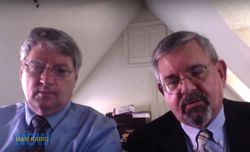

 ARRL Colorado Section Manager Jack Ciaccia, WM0G, sang Anna's praises in an attachment to her HPM Award application, calling her "one of the most qualified candidates I believe we may ever see for this award" and "one of our best ambassadors of young people in ham radio."
ARRL Colorado Section Manager Jack Ciaccia, WM0G, sang Anna's praises in an attachment to her HPM Award application, calling her "one of the most qualified candidates I believe we may ever see for this award" and "one of our best ambassadors of young people in ham radio."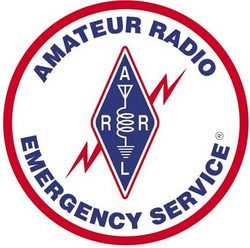 Assistant EC Dale Anderson, KK6EVX, was on site in Oroville within an hour of callout at 1600 local, Peterson said, adding, "he had to travel a bit to get there." Peterson arrived on the scene at 1845 local, and the facility was staffed until 2130 local, at which time the communications section was released from service and the gear broken down and packed. Peterson said the Butte County ARES communications van was not utilized for this event. In all, seven ARES members participated in the activation.
Assistant EC Dale Anderson, KK6EVX, was on site in Oroville within an hour of callout at 1600 local, Peterson said, adding, "he had to travel a bit to get there." Peterson arrived on the scene at 1845 local, and the facility was staffed until 2130 local, at which time the communications section was released from service and the gear broken down and packed. Peterson said the Butte County ARES communications van was not utilized for this event. In all, seven ARES members participated in the activation. Both satellites will go aloft as part of the NASA Educational Launch of Nanosatellites (
Both satellites will go aloft as part of the NASA Educational Launch of Nanosatellites (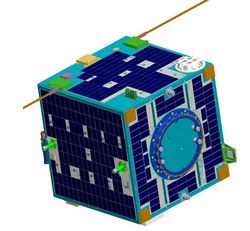
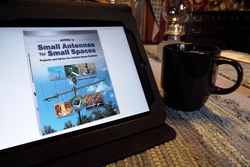 Inderbitzen said Kindle devices frequently rank highest in preference among e-book readers, and Kindle apps make it possible to use the format on most mobile devices and tablets, including Android and Apple iOS devices.
Inderbitzen said Kindle devices frequently rank highest in preference among e-book readers, and Kindle apps make it possible to use the format on most mobile devices and tablets, including Android and Apple iOS devices.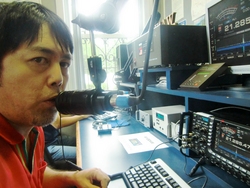
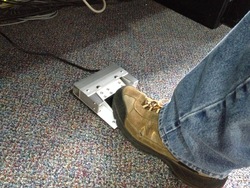

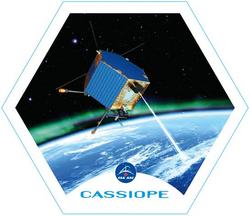 "This experiment was designed to simply test the feasibility of conducting HF Amateur Radio-satellite ionosphere and propagation studies," Frissell told ARRL. "These results show that this is feasible, and that it is possible to detect interesting geophysical features." The others involved in the analyzing the results were Gareth Perry of the University of Calgary; Ethan Miller, K8GU, of Johns Hopkins University's Applied Physics Lab; Magdalina Moses, KM4EGE, of Virginia Tech, and
"This experiment was designed to simply test the feasibility of conducting HF Amateur Radio-satellite ionosphere and propagation studies," Frissell told ARRL. "These results show that this is feasible, and that it is possible to detect interesting geophysical features." The others involved in the analyzing the results were Gareth Perry of the University of Calgary; Ethan Miller, K8GU, of Johns Hopkins University's Applied Physics Lab; Magdalina Moses, KM4EGE, of Virginia Tech, and 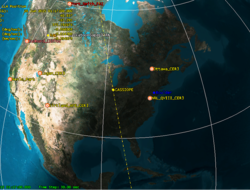
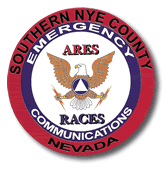 Nevada ARES Volunteers Activate During 911 Outage: Amateur Radio Emergency Services (ARES) members in Nye County, Nevada, were pressed into service on July 27 when the county lost 911 capabilities on the AT&T system. Southern Nye County Emergency Coordinator Gerald Fuge, KC6ILH, reported that nine ARES members deployed to four locations to act as 911 relay points for the Emergency Operations Center (EOC). ARES personnel staffed locations in Pahrump, Amargosa, and Beatty, Nevada. Another radio amateur not affiliated with ARES provided communication with two local FM broadcast stations and delivered EOC information releases from the ARES network to those stations. Nye County encompasses more than 18,100 square miles and is the third largest county in the US. ARES personnel were deployed for about 3 hours. Southern Nye County ARES members have responded to similar 911 outages in the past. -- Thanks to John Bigley, N7UR
Nevada ARES Volunteers Activate During 911 Outage: Amateur Radio Emergency Services (ARES) members in Nye County, Nevada, were pressed into service on July 27 when the county lost 911 capabilities on the AT&T system. Southern Nye County Emergency Coordinator Gerald Fuge, KC6ILH, reported that nine ARES members deployed to four locations to act as 911 relay points for the Emergency Operations Center (EOC). ARES personnel staffed locations in Pahrump, Amargosa, and Beatty, Nevada. Another radio amateur not affiliated with ARES provided communication with two local FM broadcast stations and delivered EOC information releases from the ARES network to those stations. Nye County encompasses more than 18,100 square miles and is the third largest county in the US. ARES personnel were deployed for about 3 hours. Southern Nye County ARES members have responded to similar 911 outages in the past. -- Thanks to John Bigley, N7UR Updated Canadian Band Plan Released: The Radio Amateurs of Canada Band Planning Committee has released an
Updated Canadian Band Plan Released: The Radio Amateurs of Canada Band Planning Committee has released an 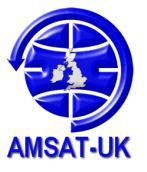 AMSAT-UK International Space Colloquium 2015 Video Available: High-definition
AMSAT-UK International Space Colloquium 2015 Video Available: High-definition  HRO Corporate Offices Relocate: Effective August 3, Ham Radio Outlet (HRO) has moved its corporate offices and has new telephone numbers. The new address is HRO Inc, 110 Tampico, Suite 110, Walnut Creek, CA 94598. Telephone (925) 933-1771; Fax (925) 933-1774.
HRO Corporate Offices Relocate: Effective August 3, Ham Radio Outlet (HRO) has moved its corporate offices and has new telephone numbers. The new address is HRO Inc, 110 Tampico, Suite 110, Walnut Creek, CA 94598. Telephone (925) 933-1771; Fax (925) 933-1774.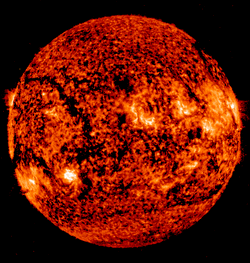 At 2348 UTC on August 5, Australia's Space Weather Services issued a geomagnetic disturbance warning. A high-speed stream of solar wind from a coronal hole is expected to cause unsettled to active conditions with possibility of magnetic storms over high-latitudes on August 7, before settling down to stable conditions by late on August 8.
At 2348 UTC on August 5, Australia's Space Weather Services issued a geomagnetic disturbance warning. A high-speed stream of solar wind from a coronal hole is expected to cause unsettled to active conditions with possibility of magnetic storms over high-latitudes on August 7, before settling down to stable conditions by late on August 8.







